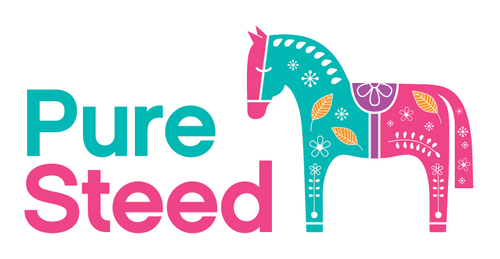Lets start from the beginning...
Before we explain the sulphate / sulphate-free debate we first need to explain how sulphates ended up in skin and hair care and what surfactants are and their use in equine grooming products.
What are sulphates?
Sulphates are chemical detergents, they have been used as cleansing agents for commercial, household, personal and pet products since the 1950's. They are used in both cleansing and conditioning formulas.
The most common sulphate-based ingredients found in equine grooming products are sodium lauryl sulphate and sodium laureth sulphate. However, due to a concerning trend NOT to list ingredients in equine grooming products, as horse owners our ability to scan for these ingredients is limited.
Sulphates create a strong lathering effect that can strip away hair and skin moisture and oil, and is known to disrupt the delicate microbiome ecosystem. Products containing sulphates can also be stubborn to rinse out, often leaving soapy residue on your horses' skin identified when scrapping your horse down.
Our advice... if you don't know what's in it - don't use it. Switch to a low foam, easy-to-rinse formula to eradicate skin discomfort after washing (try our Restore Skin and Hair Cleanser).
Introducing surfactants
Given the overwhelming research against using sulphate-based ingredients, particularly associated with dysbiosis, we took a closer look at the three types of surfactants available to help us ensure our SafeSuds protocol was maintained during the formulation of our signature 'Microbiome-Friendly' products.
Here we break down the differences between the three types of surfactants, being:
- synthetic surfactants
- bio-based surfactants
- microbial bio-surfactants
Synthetic surfactants are the most widespread, using non-renewable sources, with a final structure that is different from the natural components of living cells, composed of sulfate, sulfonate, phosphate and carboxylate salts.
Bio-based surfactants of intermediate bio-compatibility, are usually produced by chemical synthesis but integrate fats, sugars or amino acids obtained from renewable sources into their structure. Some are plant-based, however, many use animal fats. They are far gentler than synthetic surfactants and more desirable in equine care.
The final surfactant used by Pure Steed is designated as microbial bio-surfactants, considered the most bio-available and eco-friendly, as they are produced by living cells, mostly bacteria and yeasts, without the intermediation of organic synthesis. There are far greater operational costs to obtain microbial bio-surfactants compared to synthetic or bio-based surfactants but due to its bio-compatibility, a microbial bio-surfactant has excellent affinity with your horses' skin-barrier, particularly for horses with sensitive skin types.
How BiomeAID EQ helps cleanse your horse without harming their natural defences.
Our 'Microbiome-Friendly' products are powered by BiomeAid EQ®, bio-ferments containing organisms that naturally produce microbial bio-surfactants, lipases and antimicrobial peptides to help breakdown excess oil in your horse’s coat, allowing dirt and debris to be gently removed in the cleansing process without harming your horses' delicate skin-barrier, whilst also feeding the skin, hydrating for softer, soothed skin your horse will love.
